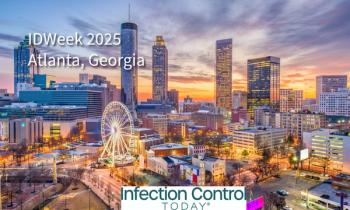
“Don’t Be a Hero and Go to Work Sick”: An Autumn COVID-19 Check-In With Matthew Pullen, MD
COVID-19 is back on the wastewater radar, but this fall’s bump does not look like a menacing new variant, says UMN infectious-diseases physician Matthew Pullen, MD. As CDC shifts to “shared decision-making” for vaccination—a move critics warn could slow access—his guidance stays simple: stay home when sick, and get the shot you can get now.
If you’ve been following wastewater surveillance updates, like the
What to Do If You Are Sick
Pullen’s first rule is as practical as it gets. “If you feel like you’re sick, don’t be a hero and go into work if you don’t have to,” he said. Rest, fluids, and at-home care are appropriate for most mild illnesses, “but if you start having trouble breathing, [go to the] emergency room. Get checked out.” He also reminds patients that treatments to reduce severe disease risk are still available and are worth discussing with a clinician, especially for those at higher risk.
Vaccination: Who Benefits Most This Fall?
On vaccination, Pullen, who is an assistant professor at the University of Minnesota, is clear about the risk calculus. “Looking at the data, [the COVID-19 vaccine is] no [riskier] than any other vaccine, like the flu vaccine,” he said. Deciding to vaccinate “becomes a little bit more of an individual decision in the 18 to 45 group,” but it doesn’t take much to enter a higher-risk category. “If you’re overweight…have diabetes…or are on any kind of immunomodulator or steroids, that’s a risk for severe disease,” he noted. “Even if you’re typically young and healthy…if you have one of those risk factors, it’s probably in your favor to get the vaccine. And certainly, if you’re under 18 or over 45 or 50, you should get it.”
That aligns with this month’s policy shift: on October 6, 2025, the CDC moved away from a universal, one-size-fits-all booster recommendation and adopted “shared clinical decision-making” for COVID-19 vaccination, essentially making decisions with your clinician, with extra attention to seniors and individuals with risk factors. Several outlets also note the CDC’s concurrent decision to separate MMR and varicella shots for toddlers.
“The Best Vaccine Is the One You Can Get Right Now”
Supply and logistics can still be bumpy. Pullen shared a family example: “My grandmother in Florida was told by CVS they were legally not giving [the COVID-19] vaccine…so she had to go to another clinic.” Parents and clinicians report similar access gaps as programs restock, even as federal programs such as Vaccines for Children keep pediatric supply eligible.
If you can’t find the absolute newest vial at the exact moment you want it, Pullen suggests pragmatism. With influenza, “even in years where the vaccine wasn’t a great match…getting it in sequential years builds broad immunity.” We don’t yet know if COVID-19 vaccines will mirror that effect perfectly, he said, “but even if your site doesn’t have the newest vaccine, it still probably wouldn’t be a bad idea to get what you can get…The best COVID-19 vaccine is the one that you can get right now.” CDC continues to note that coadministration of influenza and COVID-19 vaccines at the same visit is acceptable, and there’s no required interval between them.
What about adding pneumococcal on the same day? From a safety standpoint, the CDC allows the coadministration of the pneumococcal vaccine with other vaccines. Practically, some patients prefer to space shots a couple of weeks apart—reasonable either way, Pullen says—since pneumococcal vaccination decisions are made years in advance, not on a seasonal basis.
If You’re Already Under the Weather, When Should You Vaccinate?
A lingering cold should not derail fall protection for long. CDC’s vaccine information statement states that people with minor illnesses (eg, a cold) may be vaccinated, while those who are moderately or severely ill should usually wait until they recover. Pullen’s rule of thumb: “Wait until you’ve had a week of steady improvement and no fever—probably unnecessarily cautious, but safe.”
What Wastewater Is Saying Now
If you watch Minnesota’s dashboard (or your own state’s), you’ve seen that wastewater viral activity is a useful early signal for community trends.
Variants: What We Know (and Don’t)
The CDC continues to publish variant proportion estimates each week. Although lineages shift over time, the key for clinicians and families remains the same: monitor local trends and prioritize protecting the highest-risk individuals first. Pullen’s take mirrors that: “We’re early in the season, and it remains to be seen how big an upswing we’ll get in the colder months.”
A Quick Fall Checklist
- Stay home when you are sick; wear a mask if you must be around others and have respiratory symptoms.
- Vaccinate before the surge: talk with your clinician about COVID-19, influenza, and—if you qualify—pneumococcal this month; coadministration is fine if that’s easiest.
- Know where to look: Check CDC’s wastewater map and your health department for local signals and vaccine clinic availability.
- Focus on risk: Older adults, individuals with chronic conditions (such as asthma, diabetes, and obesity), pregnant individuals, and those who are immunocompromised should be prioritized for updated shots and early access to antivirals.
Pullen leaves us with a simple posture for the months ahead: common-sense courtesy, informed conversations, and steady habits. “Some people can’t miss work…life is complicated,” he acknowledges. “But if you have the option, isolate and recover. Get vaccinated when you can. And if breathing gets hard, don’t wait; get checked out.” This fall’s policies may emphasize “shared decision-making,” but the basics we share have not changed: protect yourself, protect the highest risk people around you, and use the tools we already have.
Newsletter
Stay prepared and protected with Infection Control Today's newsletter, delivering essential updates, best practices, and expert insights for infection preventionists.





